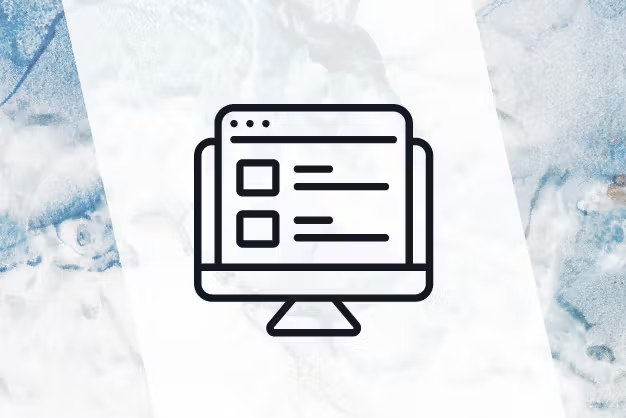Three Reasons Customers Get Stuck on Hold – and How to Address Them


In 2014, a Comcast customer tried to cancel his service. He was placed on hold…for three-and-a-half hours. After enduring that wait, the customer finally hung up and tried again, only to find that the service center had closed.
At about the three-hour mark, our exasperated customer began recording his reactions. That video (“Comcast put me on hold until they closed”) has been viewed more than 1.8 million times on YouTube.
It’s an amusing story, as long as you’re not the customer or Comcast. But putting callers on hold is nothing to laugh about, even when it cannot be avoided.
Average Handle Time – and the Scourge of the Hold Button
One of the most important of the contact center’s key performance indicators (KPIs) is Average Handle Time (AHT), which records how much time an agent spends with one customer. It has been described as the bedrock for all contact center planning systems, which makes sense; if you guess wrong with this metric, it is difficult to plan anything else correctly.
Most contact centers calculate AHT by added Total Talk Time, Total Hold Time and Total Wrap-Up Time. Some contact centers cheat by figuring hold time as a separate stat (Average Hold Time) but they are just kidding themselves. The agent is still working on that same caller’s needs. Every time a customer is put on hold, the handle time just keeps growing.
How Do Your Customers Feel? They Hate It
The text message service TalkTo recently concluded that the average American spends about 13 hours on hold every year. Over the course of a typical lifespan, that adds up to 43 days of listening to “Thank you for your patience – your call is important to us”. No wonder they are upset.
And while these numbers are not any worse than they were 10, 20 or 30 years ago, callers today may not have the same patience as their parents did. Anyone that grew up with the instant gratification of an online purchase or finding answers to questions by typing a few words into a search engine is now accustomed to getting what they want and not having to wait for it.
If you put these customers on hold, some will understand that you are trying to find the information you need to help them – but most will think you are just wasting their time. Among customers who feel they have waited too long on hold, 1/3 will hang up and never call back. Relationship over.
Let’s take a closer look at the three reasons most customers get put on hold, and what can be done to reduce hold time – or eliminate those waits altogether.
1. Not Enough Agents Available
When there are too many calls and not enough agents, it results in the especially frustrating “ABC industries, please hold.” The call is answered but the customer is immediately relegated back to the limbo of hold.
The Solution: Better Forecasting and Scheduling
Forecasts are made to anticipate caller demand and to make certain the contact center will never be short-handed. Many contact centers use spreadsheets to create forecasts, but the results are always time-consuming and often inaccurate.
A workforce management solution delivers automated workload forecasting and schedule generation. Managers can run simulations to calculate a precise forecast for future call volume, agent requirements and average handle time. Peak calling times can be identified based on trends and patterns in historical data. Once you know when incoming calls will be heaviest, it’s easier to readjust agent schedules as needed to handle the demand.
Workforce optimization is the art and science of having the right number of employees, with the right skills at the right times to meet accurately forecasted volumes of work, and to do all that at a predetermined service level. With Monet WFM Live, you are able to forecast incoming work based on historical patterns, with the added ability to schedule and track employees based on preferences, skills and availability.
2. The Agent Does Not Have the Information Necessary to Address the Caller’s Question or Situation
Callers expect answers. If a customer has to be placed on hold while the agent asks someone else, or needs to get an approval before authorizing a return (or whatever the situation may be) that caller will wonder why the company didn’t do a better job of training its employees. Yes, that is unfair in many cases, but perception is often reality, and customers will certainly be happier if their business can be conducted quickly by the person who answered the phone – without any on-hold delays.
The Solution: Agent Training and Trust
Most of these hold scenarios fall into two main categories: the agent either does not have the necessary information, or the agent could handle the situation but is forced to speak with a manager or supervisor before proceeding. By expanding the agents’ authority to make decisions, many of the latter instances can be eliminated.
If an agent cannot answer a caller’s question, it’s possible the question is so unique and unexpected that no amount of training could prepare for it. But those situations are rare. More often, callers are placed on hold in these situations because the agent is still new and learning on the job. Better training might prepare new agents to answer the full array of common customer queries, without resorting to the ‘hold’ button so they can ask a co-worker or manager for help. Managers can also help avoid these situations by created an online knowledge base that can be accessed quickly and easily (and is updated regularly to include new offers, promotions, etc.).
3. Insufficient Contact Center Resources
Resources, in this case, can refer to either personnel or technology. Forecasting and scheduling can optimize agent allocation, but if there are not enough agents on the payroll, customers will have to wait longer to be addressed. And technology exists to further refine data collection and improve agent preparation and performance, but it must be implemented to do so.
The Solution: Do What You Can
There’s no universal cure for this one. If the budget allows for hiring more agents, most contact centers will do so. If it doesn’t, it’s imperative to maximize the human resources available, and here once again WFM can be critical. When it’s delivered via the cloud like Monet WFM Live, there is no large upfront investment, so these capabilities are now within reach of small and midsized contact centers as well.
What else prevents putting customers on hold? Some contact centers are using speech analytics to analyze call patterns and identify more frequently asked questions. By doing so, agents can be better prepared to handle specific situations so those callers do not have to be put on hold while answers are sought.
Bonus Tip: Maximize Hold Time
Regardless of preparation and resources, there will always be times when a customer has to be placed on hold. Is there anything that can be done during this time to make it more tolerable – or to reduce abandoned call rates?
Statistics shows that more customers hang up if their hold time is spent in silence. Music is preferable, but even better would be pre-recorded messages of relevant information about the company, that may not address their particular situation but might be helpful to them anyway. Another option is offering to call the customer back when the agent is available.
Conclusion
Reducing the amount of time your customers stay on hold will not only result in shorter handle times, but will make your customers and agents happier. To avoid putting customers on hold in the future, make sure your agents have sufficient resources, training, trust and availability.